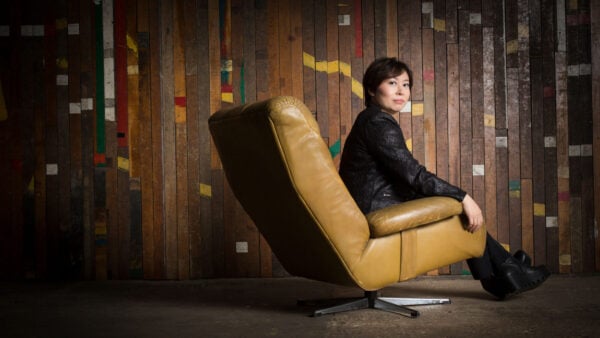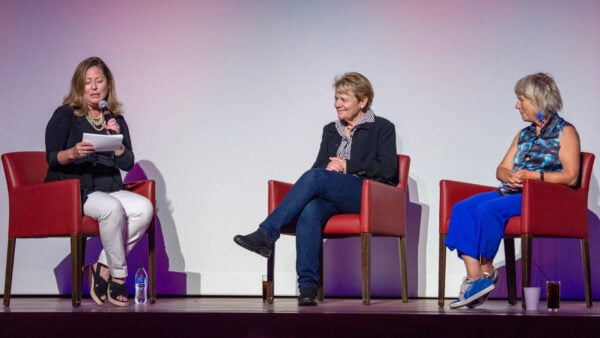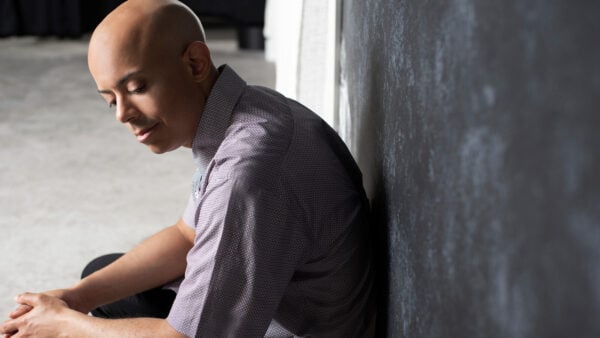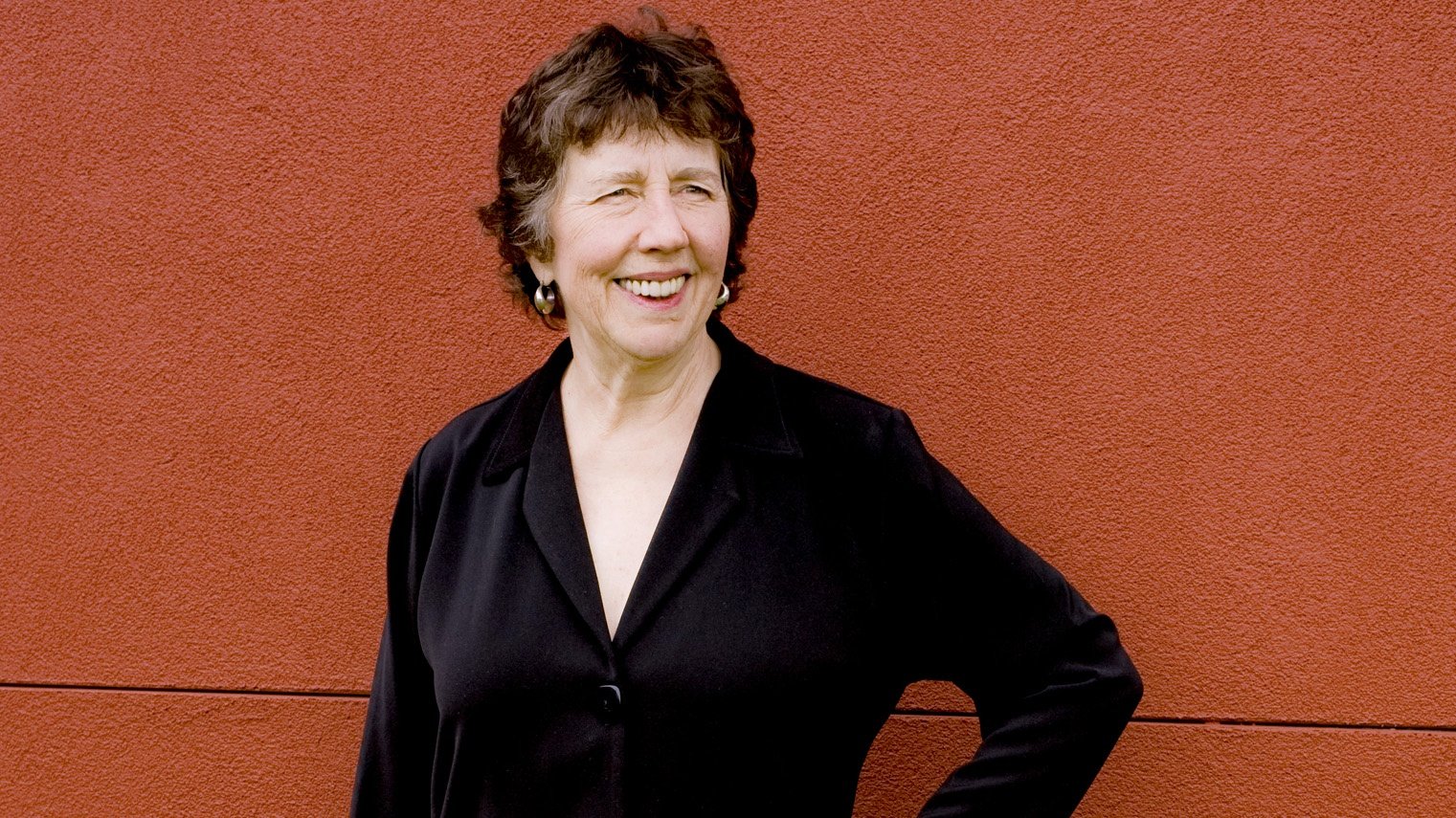
Joan Tower (Photo: Bernard Mindich)
Tense string staccato. Explosions of brave brass. Musical energy that is as nervous as it is electrifying.
Twenty-three years had passed between the unveiling of the fifth (1993) and the sixth (2016) installment in Joan Tower’s Fanfare for the Uncommon Woman.
After trailblazing conductor Marin Alsop recorded all five fanfares with the Colorado Symphony Orchestra, Tower decided it was time to revisit the piece… and add a special dedication to one of the work’s most revered fans. But how did the relationship between Marin Alsop and Joan Tower begin? And why is Fanfare for the Uncommon Woman considered to be such a staple of 21st-century repertoire?
Fanfare for the Uncommon Woman began not as a series but as an individual piece. It was written for the Houston Symphony’s Fanfare Project in the late 1980s: a project led by Houston’s then-composer-in-residence Tobias Picker, who wanted to draw fanfares from 21 composers to mark the 150th anniversary of Texas’s Declaration of Independence. The final product featured an assortment of pieces from composers national and international: from John Williams to Tikhon Khrennikov, and the focus of this story, Joan Tower.
Born in 1938 near New York City, Joan Tower moved to Bolivia with her family when she was young. Picking up on the local musical traditions, Tower was inspired to take up music, the first step on the way to eventually completing her doctorate in composition at Columbia University and in 1972 joining the staff of Bard University, where she still teaches today. Throughout the 1980s, Tower’s profile as a composer grew.
While others drew inspiration from American history or military songs, Tower wrote her fanfare as an homage to women who “take risks and are adventurous.” It was a celebration for women who succeed in spite of all obstacles in their way. She called it Fanfare for the Uncommon Woman.
The title is an overt reference to Aaron Copland’s iconic Fanfare for the Common Man, and Tower has herself reflected that her piece can be considered both a response and tribute to that iconic piece.
The theme presented in her original fanfare mimics that of Copland’s. It even shares the same instrumentation: three trumpets, three trombones, four French horns, a tuba, and percussion. But that is where the similarities end.
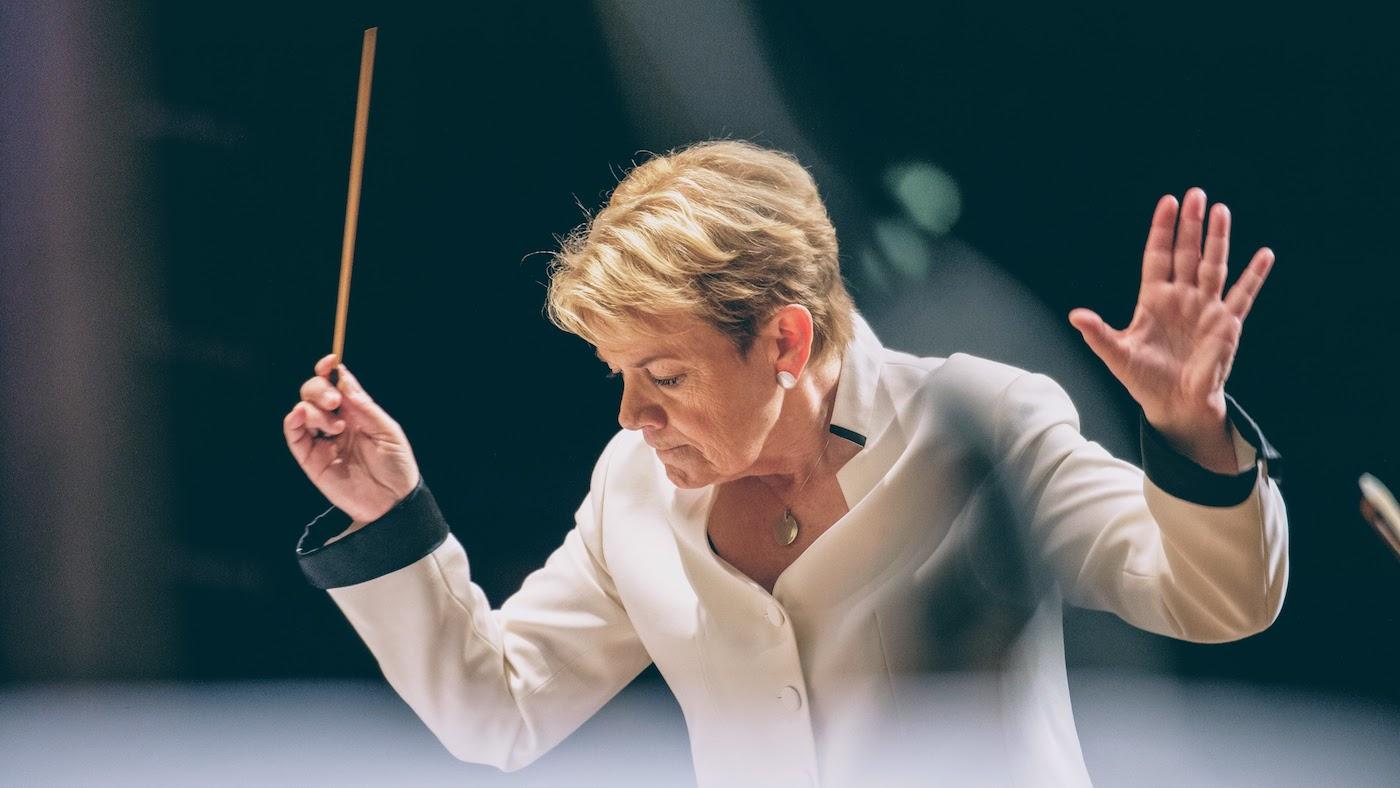
Marin Alsop conducts the Chicago Symphony Orchestra in Leonard Bernstein’s Kaddish Symphony at Ravinia in a ‘Great Performances’ broadcast (Photo: Patrick Gipson)
Premiered in 1942 in the midst of World War II, Copland dedicated his fanfare to the citizens of the US, whom he felt needed some encouragement and optimism. His piece opens with powerful timpani before giving way to trumpets proclaiming a simple, yet majestic melody. While harmonies and bursts of percussion add a splash of color, Copland’s piece sticks very much in the realm of a traditional fanfare: short, triumphant, and brass-heavy. The piece is even in B-flat Major — the same as the Star-Spangled Banner, the French Marseillaise, the 20th Century Fox Fanfare and many other triumphant, authoritative fanfare-y works.
With its dedication to boundary-breaking women, Tower’s first piece is a more liberal interpretation of a fanfare. Though the piece opens with similar drama in percussion, Tower substitutes Copland’s grandiose, slow melody line for a quick, darting motif in the trumpets that quickly tumbles into a spirited call and response. The brass ensemble murmurs amongst itself, rising and falling until the interruption of chaotic percussion draws out the piece’s climax. Not stately, but animated, exploding with color.
The instruments are about to embark on an adventure; they trade ideas with each other, at times tripping over each other’s sentences in their haste, and collectively stir up the whole ensemble’s excitement.
If Copland’s fanfare evokes the image of one single grand idea, Tower’s fanfare feels like an artist caught in the grips of fiery inspiration.
Tower’s Fanfare for the Uncommon Woman became popular, especially among women-fronted musical groups. Seeing the success of her fanfare motivated Tower to create a whole series, each dedicated to women colleagues in the music industry.
Her second fanfare, completed in 1989, is dedicated to Joan Briccetti, former general manager of the St. Louis Symphony. 1991’s third entry, commissioned by Carnegie Hall, graciously nods to Frances Richard, a former director of the Symphony and Concert Department at ASCAP. Conductor JoAnn Falletta inspired the fourth fanfare, which debuted in 1992. And the fifth fanfare, which debuted in 1993, was commissioned for the opening of the Aspen, Colorado Joan and Irving Harris Concert Hall (the very same namesake as Chicago’s Harris Theater).
All five fanfares share a highly spirited energy yet vary dramatically in instrumentation and color. The second fanfare highlights the percussion section with the addition of marimbas, chimes, and glockenspiel. Tower then varies with the number of brass instruments used, from double brass quintets in the third installment, to a full orchestra (complete with strings) for the fourth, before scaling down to just four trumpets in the fifth fanfare.
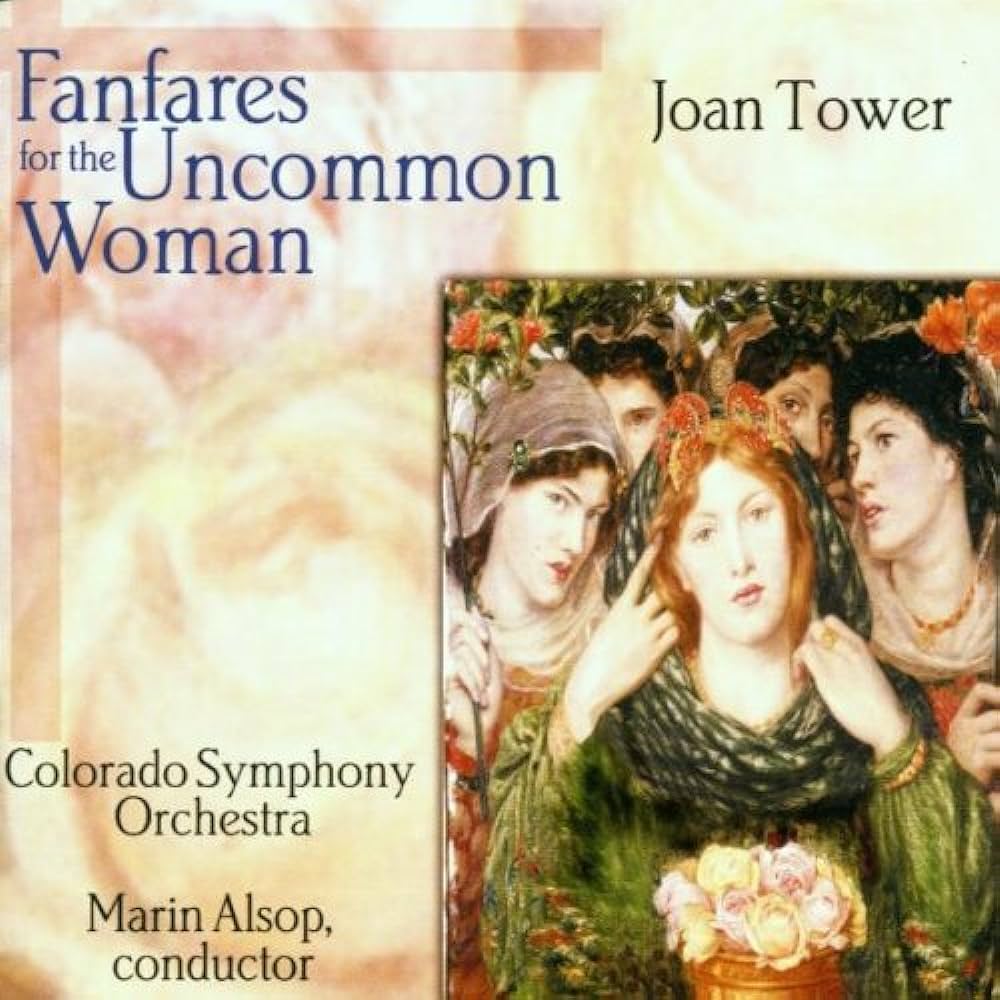 Marin Alsop became the first conductor to record the suite in its entirety, releasing an album with the Colorado Symphony Orchestra titled Fanfares for the Uncommon Woman in 1999. Alsop, one of the first women to become music director of a major American orchestra, held the pieces in high regard and rightly acknowledged Tower as “one of America’s preeminent composers.”
Marin Alsop became the first conductor to record the suite in its entirety, releasing an album with the Colorado Symphony Orchestra titled Fanfares for the Uncommon Woman in 1999. Alsop, one of the first women to become music director of a major American orchestra, held the pieces in high regard and rightly acknowledged Tower as “one of America’s preeminent composers.”
The admiration was mutual. Years after the debut of the first fanfare, and soon after Alsop had recorded Tower’s entire fanfare collection, Tower went back to update the first fanfare’s dedication. It remains dedicated to all adventurous women; it is also now dedicated to Marin Alsop.
It was Alsop too who inspired Tower to go back and add on to the fanfare project after a long hiatus. The Fifth Fanfare for the Uncommon Woman was debuted in 1993, but in 2014, Alsop approached Tower about writing a new fanfare: this time, for the Baltimore Symphony Orchestra’s centenary.
Alsop and the orchestra sought works to be premiered at the orchestra’s celebration that reflected contemporary American composers. Tower gladly accepted the challenge.
Fanfare for the Uncommon Woman No. 6 was debuted by Alsop and the Baltimore Symphony Orchestra during the 2016 Centennial Celebration. This edition features full orchestral instrumentation, lots of meter changes, and, in true Tower fashion, stormy bursts of colors. Tower dedicated her sixth fanfare to the Cuban-born, contemporary composer Tania León.
Only time will tell who — if anyone — will inspire the next fanfare in Tower’s iconic series. It is a collection that the composer herself admits is “always open-ended.”
But whether or not Tower’s series will see a seventh fanfare, the full work’s shimmering scores, its impassioned backing from conductors like Marin Alsop, and its outspoken support for women artists, guarantee Fanfare for the Uncommon Woman as a pivotal entry in the American canon.

